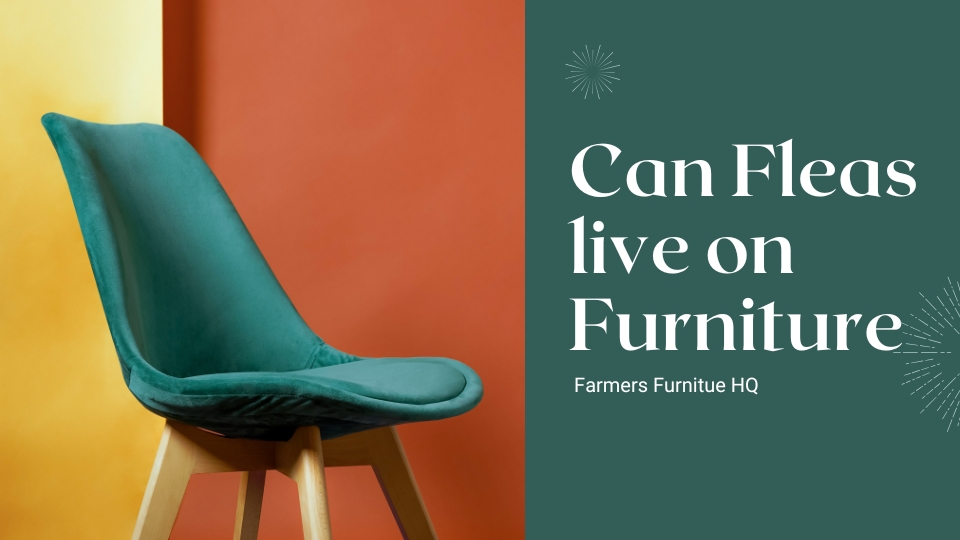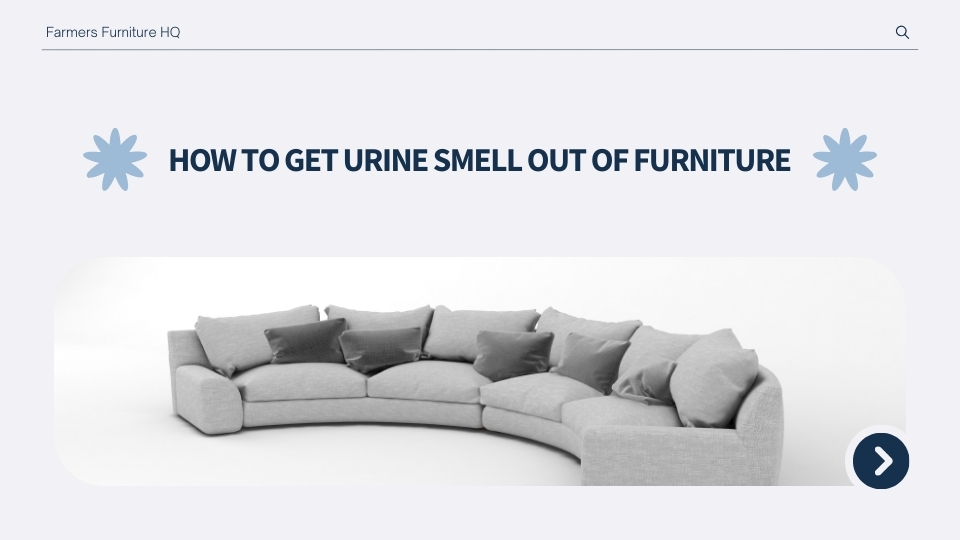Fleas are among the most persistent pests, often associated with pets. However, many people are unaware that fleas can thrive on furniture as well, even without a direct animal host.
Understanding how fleas infest furniture and what you can do about it is crucial to maintaining a healthy and comfortable living space. This article will explore the unexpected ways fleas infest furniture and provide lesser-known insights into managing this problem.
How Fleas Infest Furniture
Fleas do not originate on furniture; they are brought into the home through various means. Pets are the most common carriers, but fleas can also hitch rides on humans, other animals, or even your clothing.
Pets and Wild Animals
Fleas usually enter the home when a pet—such as a cat or dog—picks them up from an outdoor environment. These fleas then fall off the pet and land on furniture, particularly if your pet regularly rests there.
Wild animals such as squirrels or foxes can also introduce fleas into the home by gaining access through small cracks or open windows. Additionally, visitors who have been in flea-infested areas may unknowingly bring fleas inside, which can then transfer to furniture.
Human Movement
Fleas can attach themselves to your clothing or shoes when you visit an infested location, such as a pet store or an outdoor park. Once inside, they can jump onto nearby furniture, where they can lay eggs and multiply.
If you are concerned about flea infestations in your home, it is essential to consider the furniture you use daily. Sofas, in particular, can become a breeding ground for fleas if they provide warmth and shelter. You can find high-quality, flea-resistant sofas that can help minimise the risk of infestations in your home.
Can Fleas Live on Furniture Without a Host?
Many people believe that fleas require a host animal to survive, but this is not entirely true. While fleas prefer animals due to their steady supply of blood, they can survive for several days to weeks on furniture without a host.
Fleas can persist in an environment as long as they have access to a food source. If left untreated, fleas can continue to thrive on furniture, leading to a long-term problem.
Flea Life Cycle on Furniture
Understanding the flea life cycle explains how fleas infest furniture. Fleas lay eggs that fall off the host onto furniture, carpets, and floorboards. The larvae feed on organic matter such as pet hair, skin flakes, and dust that accumulates in furniture. Eventually, the larvae pupate into adults, and the cycle continues if conditions remain favourable.
Fleas can lay hundreds of eggs in their lifetime, making even a small infestation a major problem. These eggs are tiny and often fall into cracks or seams in furniture, making them difficult to detect.
Why Furniture is a Perfect Habitat for Fleas
Although fleas are commonly associated with pets, their ability to survive on furniture depends on environmental conditions. Furniture provides an ideal setting for fleas due to the following factors:
- Warmth: Fleas are drawn to warmth, and furniture in living rooms or bedrooms provides a stable, warm environment.
- Shelter: Furniture has numerous hidden areas, such as cracks, seams, and crevices, where fleas can lay eggs and larvae can develop.
- Moisture: Fleas require a certain level of humidity to thrive. Furniture in humid environments, such as near heating systems or humidifiers, can become an ideal breeding ground.
These factors make furniture an appealing place for fleas to settle, particularly if pets frequently use it.
Fleas and Human Interaction with Furniture
Although fleas primarily feed on animals, they will bite humans if necessary. Fleas are attracted to body warmth, so if you sit on infested furniture, they can easily jump onto you and bite, leaving itchy red welts.
Many people only realise they have fleas in their furniture once they notice bite marks or itching after sitting on certain pieces of furniture. While fleas prefer animals, a human resting on flea-infested furniture can provide a temporary food source, allowing the infestation to persist.
Preventing Fleas from Infesting Your Furniture
Prevention is key to avoiding flea infestations in your furniture. Here are some effective measures:
- Treat Pets Regularly: The best way to prevent fleas from spreading is to treat pets with flea prevention medication. This stops fleas from transferring from pets to furniture.
- Vacuum Frequently: Flea eggs and larvae can hide deep within furniture. Regular vacuuming, especially in seams, cushions, and crevices, is crucial.
- Use Flea-Proof Furniture Covers: If your pets rest on specific furniture, consider using flea-resistant covers to reduce infestation risks.
- Wash Fabrics Often: Launder any removable fabric covers, pillowcases, or blankets regularly. Use hot water to ensure fleas and their eggs are eradicated.
- Apply Flea Treatments: Special flea sprays and powders are available for furniture. Ensure these treatments are safe for your furniture material.
How to Remove Fleas from Furniture
If fleas have already infested your furniture, follow these steps to eliminate them effectively:
- Vacuum Thoroughly: Use a strong vacuum to clean all furniture surfaces, paying close attention to seams and cracks. Empty the vacuum bag immediately.
- Apply Flea Sprays: Use a flea spray suitable for your furniture. These sprays kill adult fleas and larvae, preventing reinfestation.
- Steam Cleaning: A steam cleaner is highly effective for killing fleas at all life stages. The heat from steam eliminates fleas, eggs, and larvae without requiring chemicals.
- Wash All Bedding: If pets rest on furniture, wash all bedding, cushions, and removable fabrics in hot water.
- Professional Treatment: If the infestation is severe, consider hiring a professional pest control service to apply stronger treatments.
Table: Effective Methods for Eliminating Fleas from Furniture
| Method | Effectiveness | Benefits | Limitations |
|---|---|---|---|
| Vacuuming | High | No chemicals, immediate results | Requires frequent repetition |
| Flea Sprays | High | Easy to apply, effective | Chemicals may damage furniture |
| Steam Cleaning | Very High | Kills fleas at all stages | Requires equipment, effort needed |
| Washing Bedding | High | Safe, eliminates eggs & larvae | Doesn’t address deeper infestations |
| Professional Services | Very High | Thorough, quick treatment | Can be expensive, requires scheduling |
Final Thoughts
Fleas can indeed live on furniture, and the idea that they are only associated with pets is a common misconception. In reality, fleas are highly adaptable and can thrive in your home, even without a pet host.
By understanding how fleas infest furniture and taking preventative steps, you can keep your home flea-free. Regular cleaning, flea treatments, and monitoring your pets are essential to preventing an infestation. If fleas do appear, swift action with the right treatments can help ensure your furniture and home remain pest-free.

